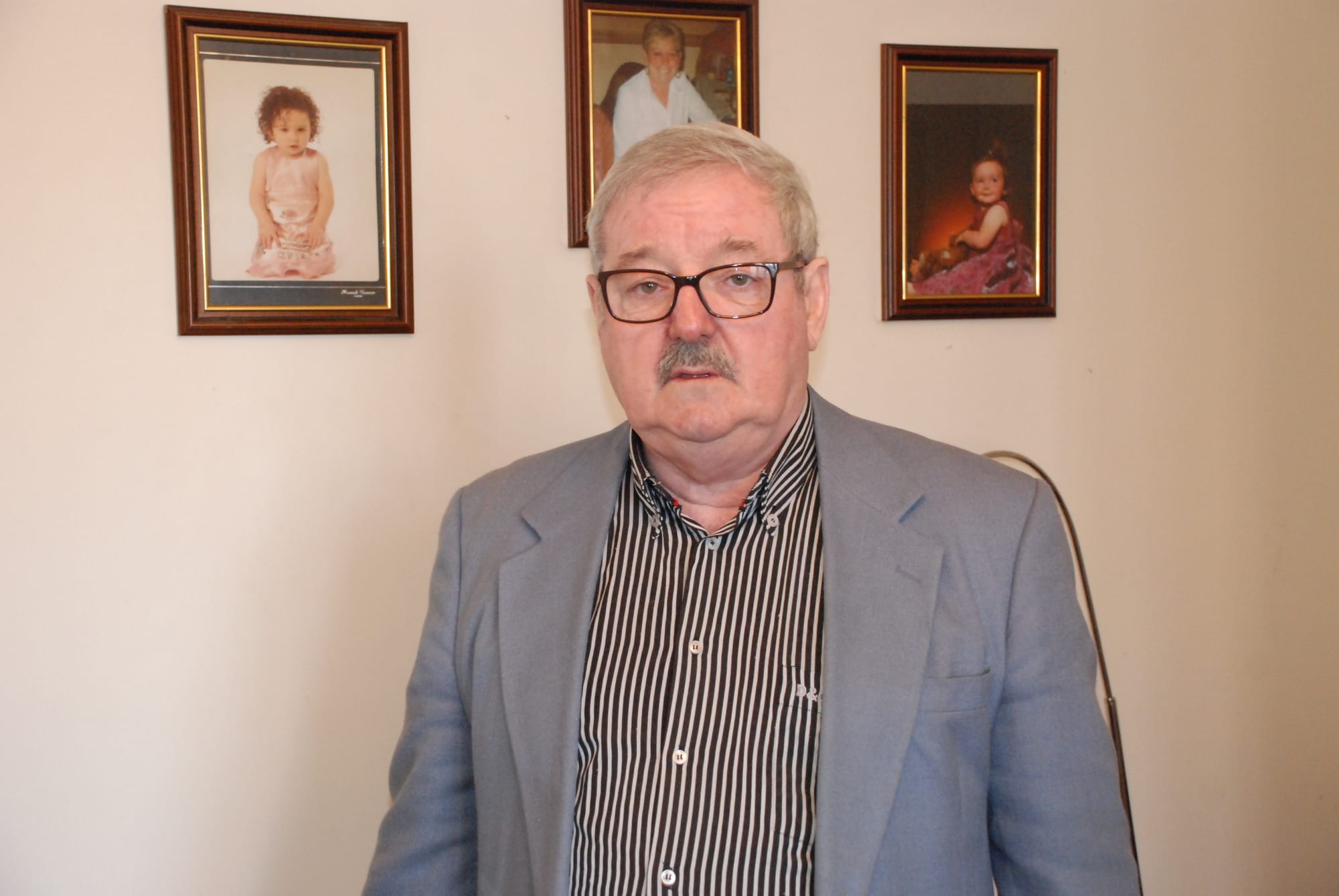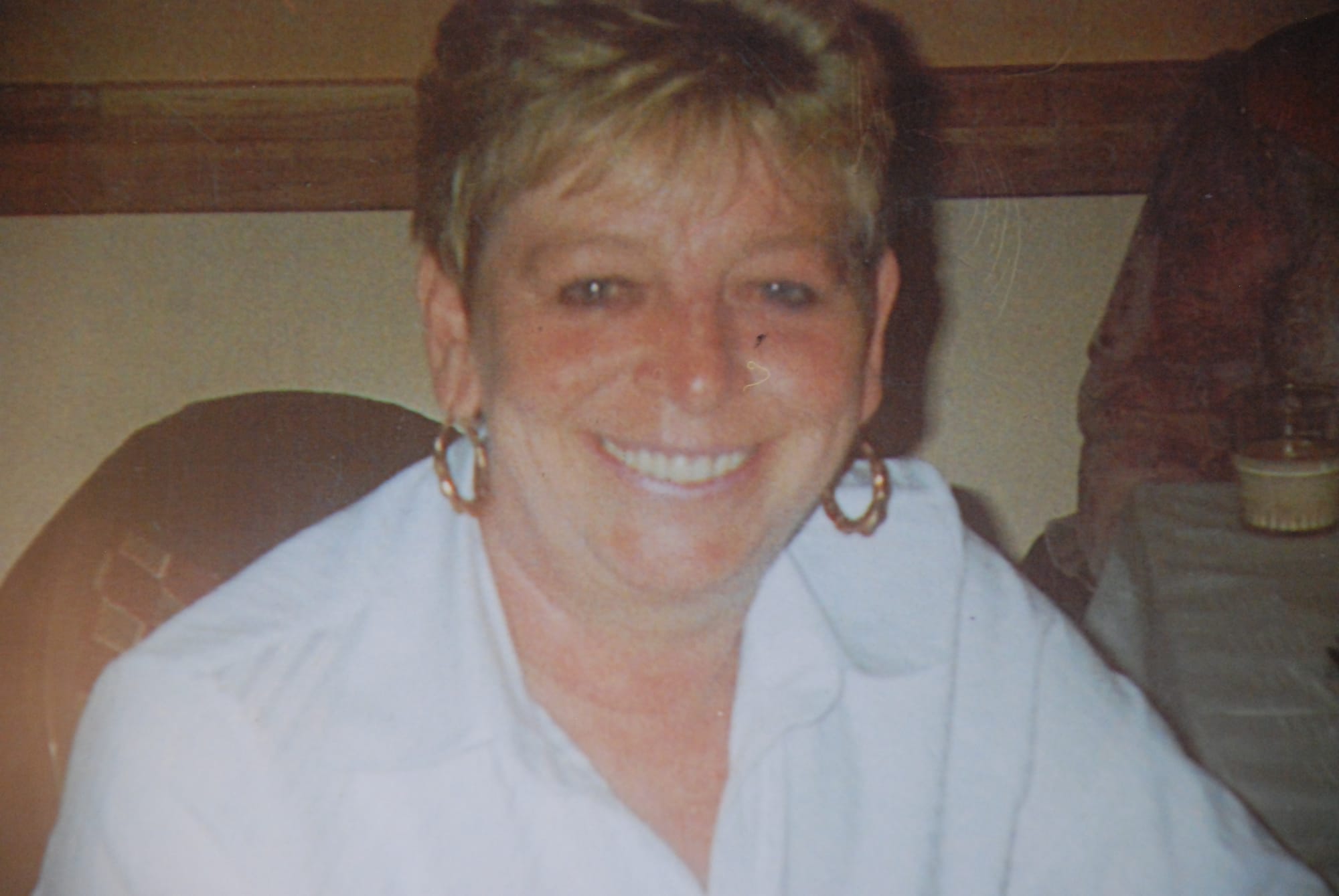What’s the best way to tell area residents about plans for a new asylum shelter nearby?
The government should tell communities directly about plans for new asylum shelters, some activists and politicians say.
Caught in the barbed wire wrapped around the convent’s front gate, a woman was trying to escape. As the couple passed by, she called for help.

Leaving Mullet’s Bar on Amiens Street one night in the late 1970s, Betty and Tony Dunleavy strolled home to their small flat. It was shortly after 12:30am.
Rounding the corner of Buckingham Street onto Sean McDermott Street, the young couple passed the looming red-brick structure on their left, the Convent of the Sisters of Our Lady of Charity, behind which the Magdalene laundry stood.
“On our way home, we’d always pass the convent,” says the now 69-year-old Tony, sat at the small kitchen table in his house on Champion’s Avenue, recalling the night that he and his late wife heard a cry in the dark.
Caught in the barbed wire wrapped around the convent’s front gate, a woman was trying to escape. As the couple passed by, she called for help.
The Dunleavys answered.
In 1821, Mrs Brigid Burke set up a refuge at Mecklenburg Street (later Railway Street) in the north inner city for “troubled and homeless” women.
A four-member lay committee became responsible for the institution, with a matron employed to operate it, according to the report by Martin McAleese on the Magdalene laundries, published in February 2013.
Around 1860, this lay committee bought up more land, including a site on Gloucester Street, later renamed Sean McDermott Street.
In 1887, the Sisters of Charity started to run the institution. It was one of 10 Magdalene laundries examined in the report, and the last to close in Ireland, in 1996.
Clambering atop the pillar next to the convent’s gate, Dunleavy unhooked the woman and helped her down, he recalls. “There was barbed wire all around the edge.”
All three made their way home. “We brought the girl up to our one-room flat on Sean McDermott Street,” he says.
He then walked to Summerhill to a chipper and went back and handed the young woman her share.
“She couldn’t believe the food I brought back. She milled into it,” he says. “She was talking to Betty. Betty was a very lovable person. Anyone could talk to her from the heart.”
The woman, who Dunleavy reckons was 18 or 19 years old, stayed the night. Tony and Betty decided they’d help her clear out in the morning.
First-hand testimonies of survivors of Magdalene laundries recount the punishments meted out to escapees who were recaptured.
Many women described “the lasting effects of traumatic incidents such as escape from the laundries and subsequent recapture and return”, says the May 2013 report by Justice John Quirke on compensation for the Magdalene women.
Sometimes women who were caught were kept separate from other women for several days after – left in isolation, in a room alone, and fed alone, the McAleese Report notes.
“They were escorted to and from the toilet and then back to isolation,” it reads. “One woman has told us that she was isolated from everyone else for three days and never again saw the girl who she tried to escape with.”
For those inside these institutions surveillance was constant, notes one survivor’s account. “While you were in Ireland (the nuns) knew exactly what you were doing. You had to leave Ireland to escape.”
Tuam in Galway, though, was far enough for the woman who managed the breakout from Sean McDermott Street.
“The girl”, as Dunleavy refers to her, wanted to get back to Tuam, where her aunt lived. Dunleavy enlisted the help of a friend, a lorry driver at Dublin Port, he says.
His friend managed to get “the girl down the country”, away from the watchful eyes of the church and the Gardaí, who patrolled the neighbourhood anytime there was an escape from the Magdalene laundry.
As the girl was ferried back to Galway, the nuns were out in force looking for her, says Dunleavy.
The couple didn’t see her again. Betty did, however, receive the occasional postcard from Tuam, says Dunleavy.
“In today’s world, it is difficult to understand the circumstances which could in the past have led to daughters, sisters and mothers being abandoned or disowned by their own families,” notes the McAleese Report.
“It may be equally difficult to understand the apparent acceptance by certain families of instructions from people in positions of authority, particularly priests, in relation to family matters,” the text continues.
It is “unfair to judge these cases or the people concerned by applying today’s standards and societal norms”, the report notes.
There were those willing to challenge this system, though. “We were aware of the injustice,” says Dunleavy. “Even back then.”
In fact, he says, most people from the north inner city were. “I never heard one person say, ‘Those women deserve to be in there,’” he says.
“You just weren’t told what was going on behind those gates,” says Joe Dowling, a childhood friend of Dunleavy. “It was like a prison.”
Yet on more than one occasion, Betty and Tony Dunleavy were there to help women in their attempted escape, says Dowling.

Dunleavy shuffles over to the kitchen table at his house off Sean McDermott Street. On the wall hangs a mirror.
Inset into it, a picture of him and Betty holding hands, an inscription below the image: “HUSBAND AND WIFE…GREAT PARENTS…BUT MOST OF ALL BEST MATES, TONY AND BETTY.”
The Dunleavys married on 22 March 1972 and lived for a time in their small flat.
On another night in late 1978, as they made their way home from Mullet’s Bar along their usual route by the convent, they heard another cry in the night – another woman trying to escape from the Magdalene laundry.
At Betty’s behest, Dunleavy again clambered atop the granite pillar.
The “Gloucester Street laundry”, as it was know locally, on what is now Sean McDermott Street, had a capacity of 150.
Its occupancy varied over time, the McAleese report notes, but by 1952 there were 140 women living on site in dormitories.
In the mid-1970s, Dunleavy was hired to paint part of the convent attached to the laundry on Sean McDermott Street. “It was one of the finer parts of the convent. It was the part they wanted everyone to see,” he says.
“The atmosphere where we were was, ‘Everybody is happy here’. […] Another aspect of the way it was presented by Mother Superior. It was all fake,” he says.
Ostensibly, Magdalene laundries were rehabilitation centres for women who became pregnant outside of marriage, women with mental disabilities, women who were homeless.
As he painted inside the convent, Dunleavy heard singing coming from the laundry, he says –from a room containing large metal drums, with fans attached to the wall, facing onto Railway Street.
There was a vegetable patch, he recalls, where the nuns grew potatoes and tomatoes, as women passed through the convent to and from the laundry.
After lunch one afternoon, Dunleavy took two tomatoes and some boiled eggs and placed them in a paper bag and handed this to one of the women. “I slipped it to her,” he says. “She took it.”
Some days later, while painting, he saw the same woman. Her hair had been cut as punishment for her transgression.
Dunleavy was chastised by his foreman, who was told by the Mother Superior not to feed the women.
Helping the second escapee down from the barbed wire, Dunleavy ripped the mohair suit he had on, he recalls. “It wasn’t easy,” he says. “Even though I was used to climbing up on barbed wire and the likes.”
He and Betty took the girl back home. There, she was fed and stayed for three nights, as the powers that be patrolled the streets again.
“We (Betty and I) knew that that was the procedure, that they’d be out and about,” he says. “I could see their determination, the nuns. This was the money aspect. Here was a slave worker that earned [money] for them.”
As nuns and police searched the streets around Connolly Station “the girl” and Betty got to know one another in the local pub, surrounded by other women who drank in the nearby Diamond Bar.

There “Betty introduced her to a new world, a kind world where all the women were lovely people”, says Dunleavy. “The girl was crying they were so kind.”
Betty had “a heart of gold”, says Dowling. “She’d have helped anyone, so she would have.”
Drinks in the Diamond Bar ended. “All the women cried when she was leaving”, says Dunleavy.
The girl snuck over to Liverpool, travelling on a boat on which Dunleavy’s uncle worked at the time. They never heard from her again.
Lining the walls of Dunleavy’s house are photos of Betty, smiling, tanned with cropped blond hair. “She was just a sincere, lovely person,” says Dunleavy.
Betty died suddenly in 2003.
To the side of the convent chapel on Sean McDermott Street there are five faded circles on the concrete floor. In each circle, nine bolts mark where laundry drums once stood.
Opposite these, down a narrow passageway, there are three mirrors on a tiled wall, the only fragments left of the laundry’s lavatory.
Across the yard from the where the laundry once stood – now used as a storage space by Dublin City Council, which owns the site – two large extractor fans rust in the afternoon sun. Paisley curtains flutter in a now-abandoned bedroom where pigeons roost.
It remains to be seen what will happen with the former Magdalene Laundry site. Most recently, councillors have said they will vote against the council’s plan to sell it to a hotel chain.
For Dunleavy, there should be a memorial before anything else, he says, “an acknowledgement of what them poor girls went through … a proper memorial to let people know”.
These days, approaching 70, he doesn’t reflect too often on the times Betty and himself helped two women escape the Magdalene Laundry.
Nor does he feel anger towards the institution or the figures who maintained that system.
“The environment around this area, there was an acceptance of things,” says Dunleavy. “When you’re poor, deprived in an area such as this years ago you took it for granted. Anger didn’t enter it. You had your opinions and a negative attitude towards these institutions, like the nuns and the sisters.”
Patience and acceptance have their limits, though, he says. He’d still help those two women caught in the barbed wire, desperate for their freedom. “We felt that we’d done a good thing, Betty and I,” he says. “That we’d done the humane thing.”